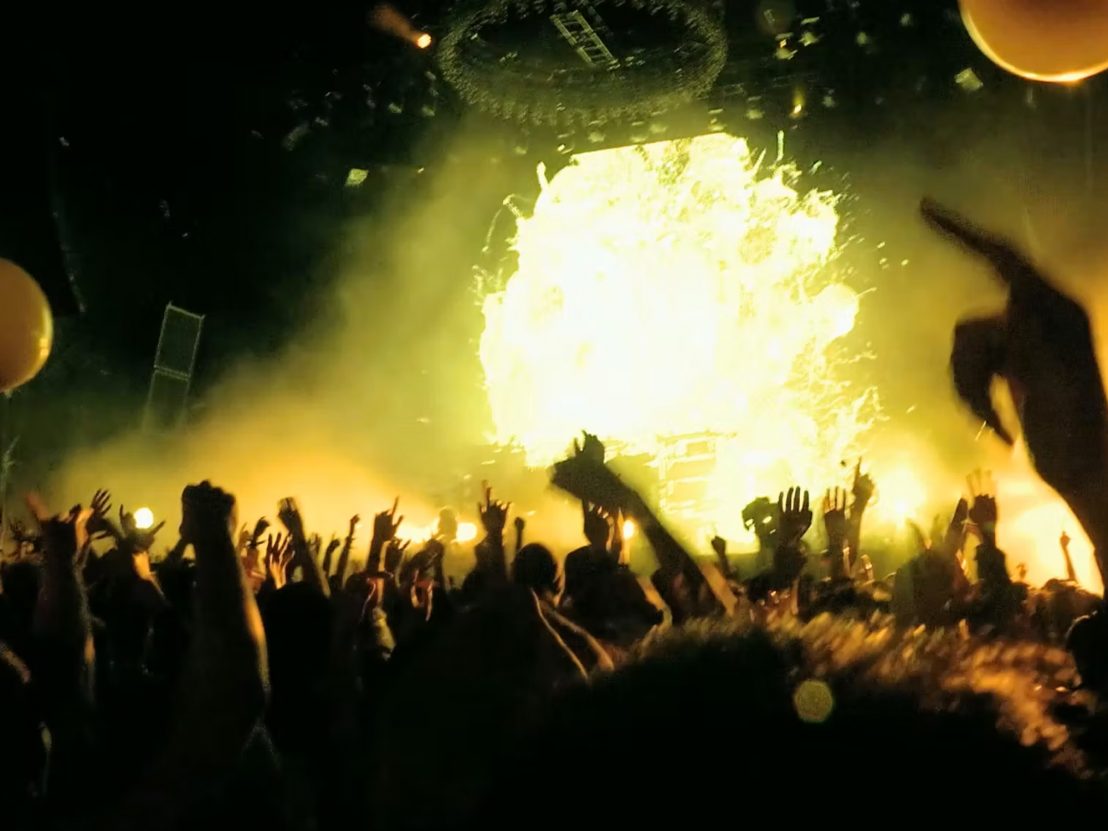
Prior to the release of their 2007 concert film/arthouse documentary hybrid Mirior Noir, Arcade Fire’s Win Butler gave an interview to Pitchfork where he admitted his disinterest in most concert films: “Even if you have a hundred cameras and it’s shot from every angle, there’s just a communal, visceral thing that never translates very well.” As a lifelong veteran of both concerts and concert films, I can’t say I fully disagree with Butler’s assessment. In many instances, including his own band’s Live at Earls Court in 2017, something ineffable gets lost in the transition and many directors don’t know how to translate a band’s identity to recorded film.
Of course that doesn’t mean it’s impossible. More that everybody instead has to get creative in their presentational choices. To wit, Adam Smith’s work on The Chemical Brothers: Don’t Think from 2012 remains the gold standard in concert filmmaking through its blissful communication of the synaesthesia a Chemical Brothers gig seeks to invoke. That mixture of beatific musical rhythms aiming to pummel and entrance in equal measure, a multicoloured orgy of carefully-timed flashing lights in sync with the music, and a series of impressionistic visuals (sometimes psychedelic and other times comical) all combining with the aim of creating a sensory overload for crowd members to lose their inhibitions over. (And, not coincidentally, provides cover for the fact that the nature of theirs music means that ‘the Chems’ themselves can’t be active stage presences.)
One might assume – given the spectacle of Chemical Brothers live show like the 2011 Fuji Rock set caught in Don’t Think – that Smith could rely primarily on the on-site festival camera feeds provided by Fuji TV as his source footage and still manage to translate the show’s energy well enough. Lots of clear wide shots of the stage, regular swooping crane shots of the festival throng, the occasional close-up of the Chems twiddling various knobs. As anybody who watches the BBC’s staid yearly coverage of Glastonbury could tell you, though, that presentation has a way of flattening nearly every artist subjected to it.
Whilst Smith does frequently utilise the coverage provided by in-house festival production, it functions more as a base to build around. He has many roving camera operators in the crowd, capturing both the action on-stage and individual crowd members rapturously transfixed off-centre by the lights and sounds in intimate close-up. In some ways, these recall YouTube fan footage or the Beastie Boys’ Awesome: I Fuckin’ Shot That! which was filmed entirely by fans at their 2004 Madison Square Garden show, just with a greater camera stability and without having the warbling of the guy next to the camera coming through. They often capture some characterful moments too: blissed-out members being startled to attention by unexpected drops; a guy excitedly telling his friend the next song is “Swoon” before it properly drops; confused horror at the recurring images of clowns throughout the set.
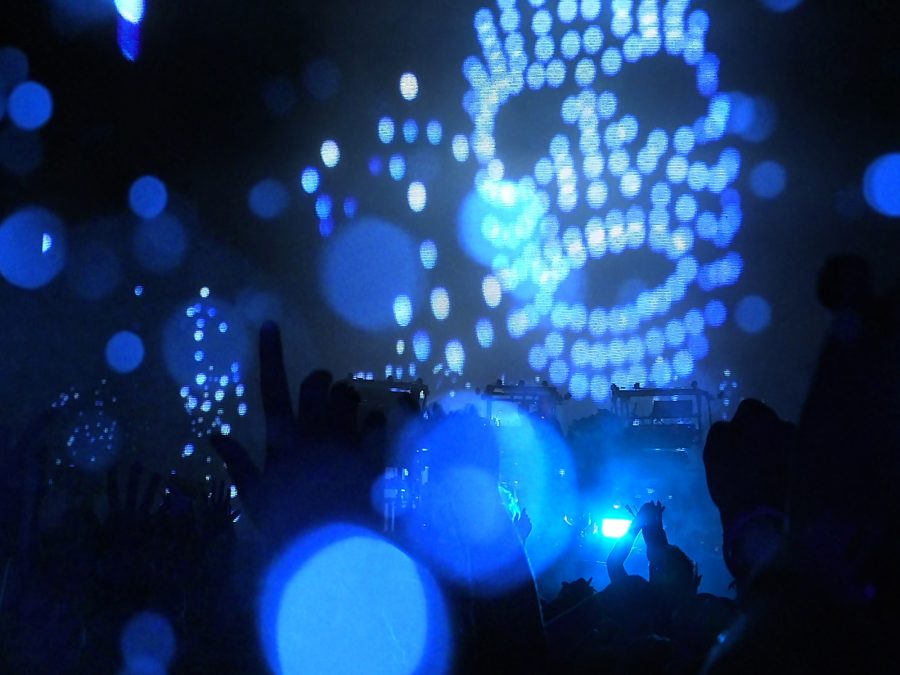
But those crowd shots wouldn’t be anything all that special or noteworthy on their own, even with the night-time setting and roving stage lights creating some wonderful (and accidental) instances of shadow interplay cinematography. That’s where Smith’s role in the band’s live show comes in. Since their first performance in 1995, he’s been the Chems’ go-to live visual provider alongside Marcus Lyall, the pair officially being credited as the live show directors since 2010, as well as co-directing the visual album aspects of Further (the record the band were touring at the time of Don’t Think’s filming). As such, Smith intimately knew the show he and his crew were recording – akin to Jonathan Demme and David Byrne plotting out the live show which would make up Stop Making Sense in exact storyboarded detail – and could, with the aid of editors Jono Griffith & Mark Whelan, arrange and augment his footage in ways which blur the lines of in-film reality.
For example: “Setting Sun” intermittently recreates its stage visuals, borrowed from the original 1996 music video where a woman turns her head in profile whilst psychedelic lights stream over her face, with crowd members in brief insert shots and the only immediate tell comes from the higher-definition of the new footage. “Chemical Beats” overlays the Catherine wheel sparks visual onto the concert footage and combines them with post-production artificial shaking that makes the acid synth build almost resemble a rocket launch, like the music is so massive the movie can barely contain it, and artificial crash zooms on beat drops which should be corny but Smith somehow gets away with. At other points, mostly during the set’s downtime transitions between numbers, Smith moves the focus a little away from the stage to project snatches of the visuals around the festival field or briefly following one reveller (Mario Kobayashi Stopford) with a SnorriCam (a chest-mounted front-facing camera) in a daze afterwards as audio and video reminders of what she earlier witnessed disorient her.
These are the more obvious, flashy examples of Smith trying to add a psychedelic slant to Don’t Think. An attempt to make this one gig feel like an entire world which is at once all-encompassing and barely-containable. But it’s the moment-to-moment, floor-level, tight-lensed, overstimulating visual arrangement which really makes the film sing. In fact, for all the flash and sensory overload going on, what most sticks out is how rhythmic and varied Smith’s hard cuts actually are. The drops on “Saturate” are followed by shots which last much longer than average, almost as if hanging in air on adrenaline, with the final one flowing into a wide-angle crane shot that keeps pulling further and further back, exposing just how large the crowd watching truly is, before the closing drums snap us back into the pit to herald the arrival of the harder-edged “Believe.”
Most especially, “Star Guitar” on a casual pass feels way busier on an editorial level than it actually is. Due to the segment’s usage of a cross-dissolve overlay of the pulsing red and orange lights on-stage, a large percentage of close-ups and extreme close-ups of festivalgoers and their limbs, and frequent instances of rack-focus shifts, the footage descends into glorious abstraction. Lights and sounds and bodies all melding into indecipherability, into a disorientating oneness. In the moment it feels like euphoric quick-cut chaos, but when examined closely you find that the base footage isn’t all that busy. Cuts arrive after a few seconds, always on-beat rather than rapid and constant, whilst the camerawork remains composed and considered.
There’s so much control in Smith’s construction of a sequence designed to make viewers (and gig attendees) lose all control. Even when trying to keep my brain in distant analytical mode for writing this piece, I couldn’t help but mentally surrender to the synaesthesia of Don’t Think multiple times. As the titular song commands: “Don’t think, just let it flow.”
Published 22 Jul 2022
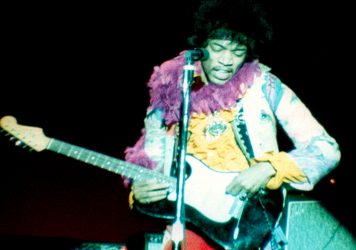
By Matthew Eng
DA Pennebaker’s documentary milestone remains historically vital and as bracingly alive as ever.
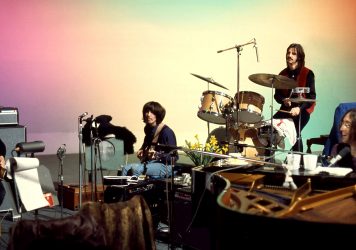
By Elena Lazic
Peter Jackson unearths and re-edits footage of the Beatles’ last hurrah, with euphoric and exasperating results.
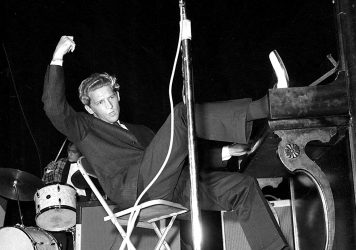
By Mark Asch
Ethan Coen’s solo debut effort is a ribald and energising archive montage on the life of taboo-busting rocker, Jerry Lee Lewis.